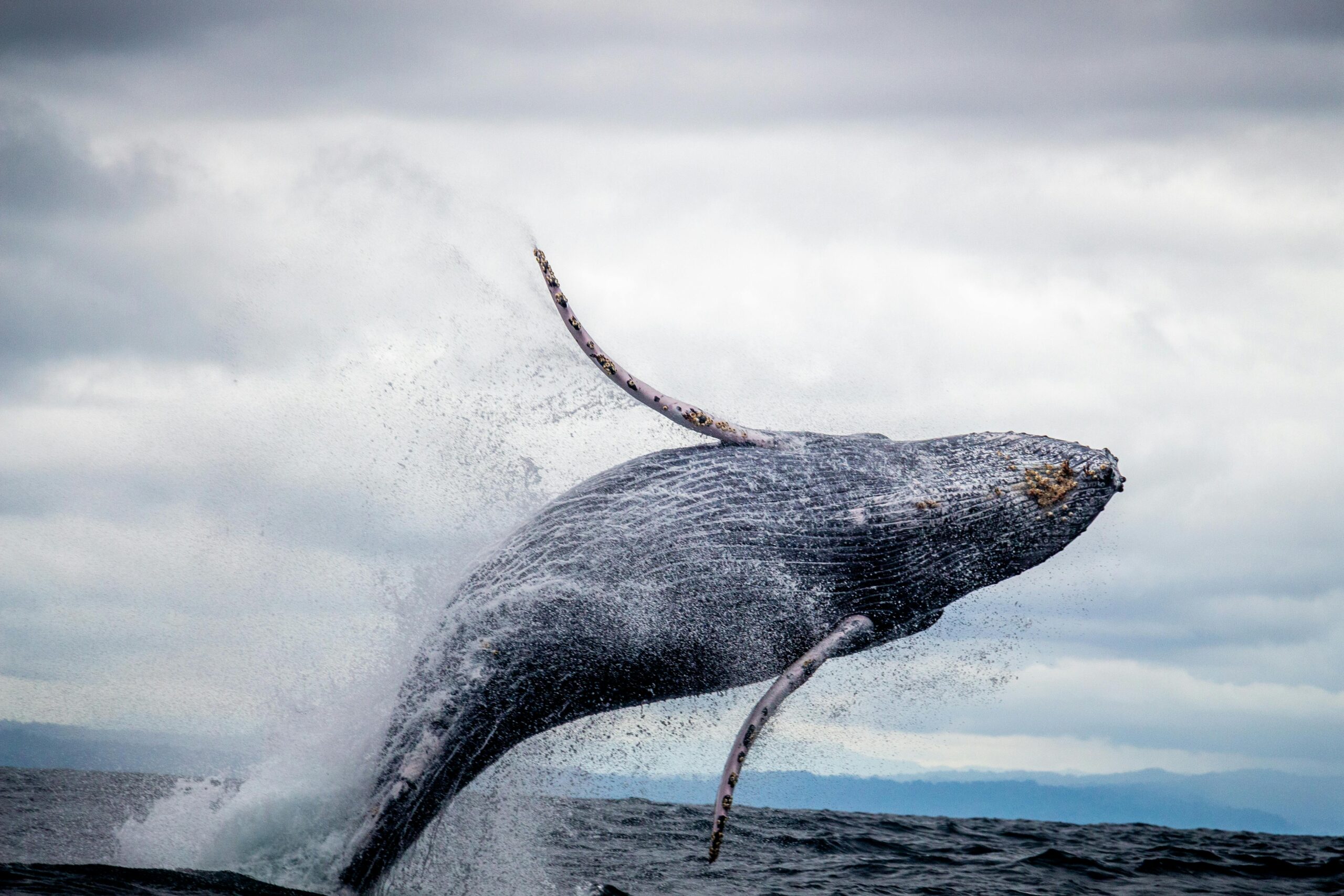By: Chloe Ong
An extremely rare whale was spotted on July 15, 2024, swimming just off the Irish coast. The North Atlantic right whale was last seen in Ireland in 1910 and has been labeled under the Endangered Species Act since 1970. Humans have threatened these whales’ numbers, as there are only approximately 350 remaining individuals. Sadly, these beings might become extinct in about 20 years.
The North Atlantic right whale has a broad back with no dorsal fins and a long arching mouth that begins above the eye. As these whales are baleen whales, they feed themselves by swimming through swarms of plankton with their head slightly above the surface and their mouth open. North Atlantic rights can be identified by the white calluses on their head, which are quite noticeable contrasts against the whale’s dark gray body. North Atlantic right whales are often found in coastal waters, especially during breeding seasons, which happen during spring and summer. These creatures are rather curious and acrobatic and can be seen breaching the water. They can also be seen smacking their tails and flukes alongside the water.
As the North Atlantic right whales are a highly endangered species, the Irish Whale and Dolphin Group (IWDG) is asking people not to pursue the whale and only observe it from the shore. They stated,
“As with all whales, they have full protection under Irish law…this is our chance to help a population of whales on the very brink.
Please give it space.”
How can we help North Atlantic right whales? Rising levels of ocean noise caused by human activities are potentially disrupting communication among right whales and increasing their stress levels. By making less noise, perhaps the whales will be less disturbed. North Atlantic right whales primarily die due to entanglement in fishing gear and collisions with vessels. NOAA Fisheries are helping by reducing the risk of fishing gear entanglements, slowing down vessel traffic, and reducing ocean noise.
Image Credit by Silvana Palacios











